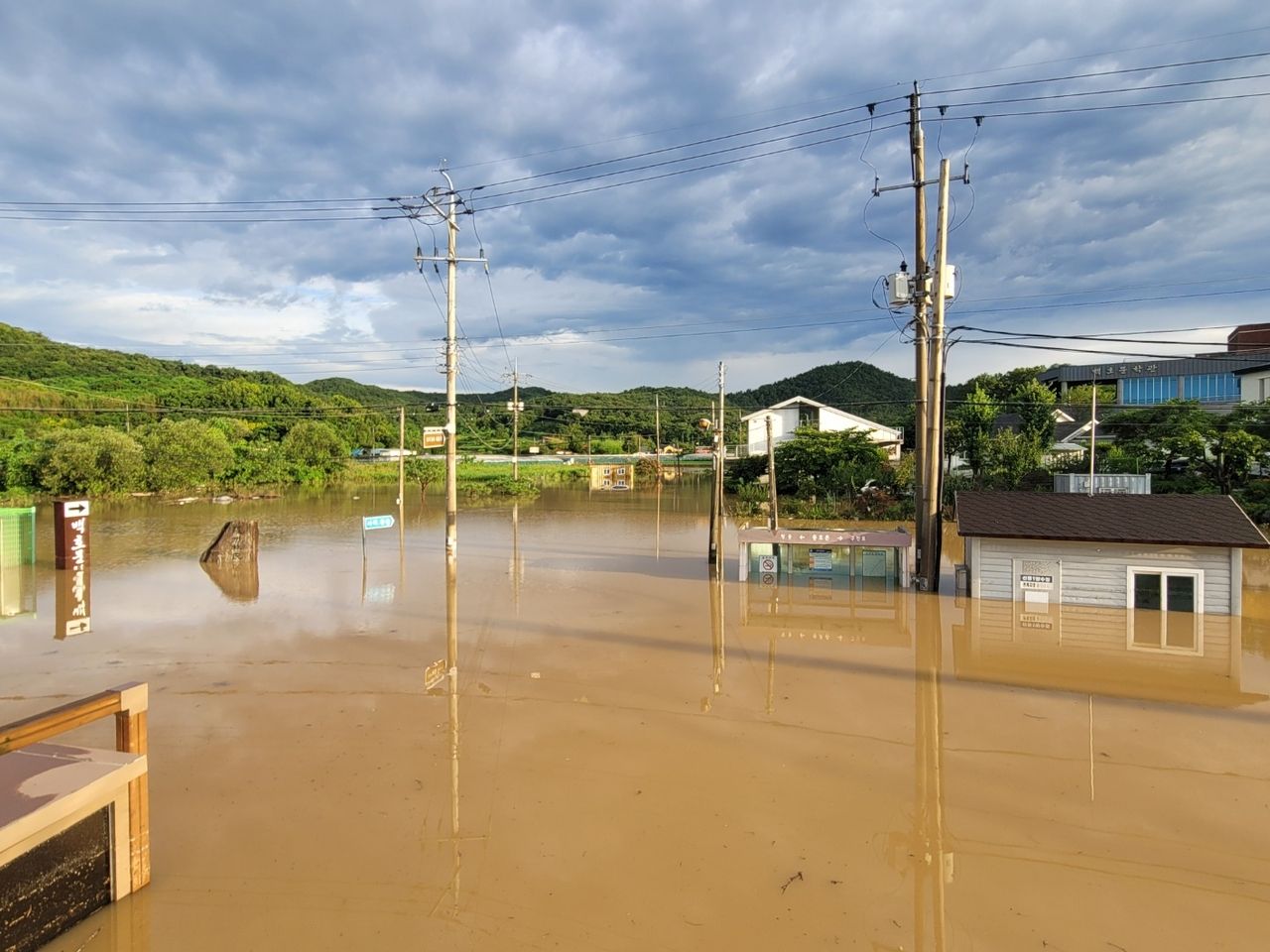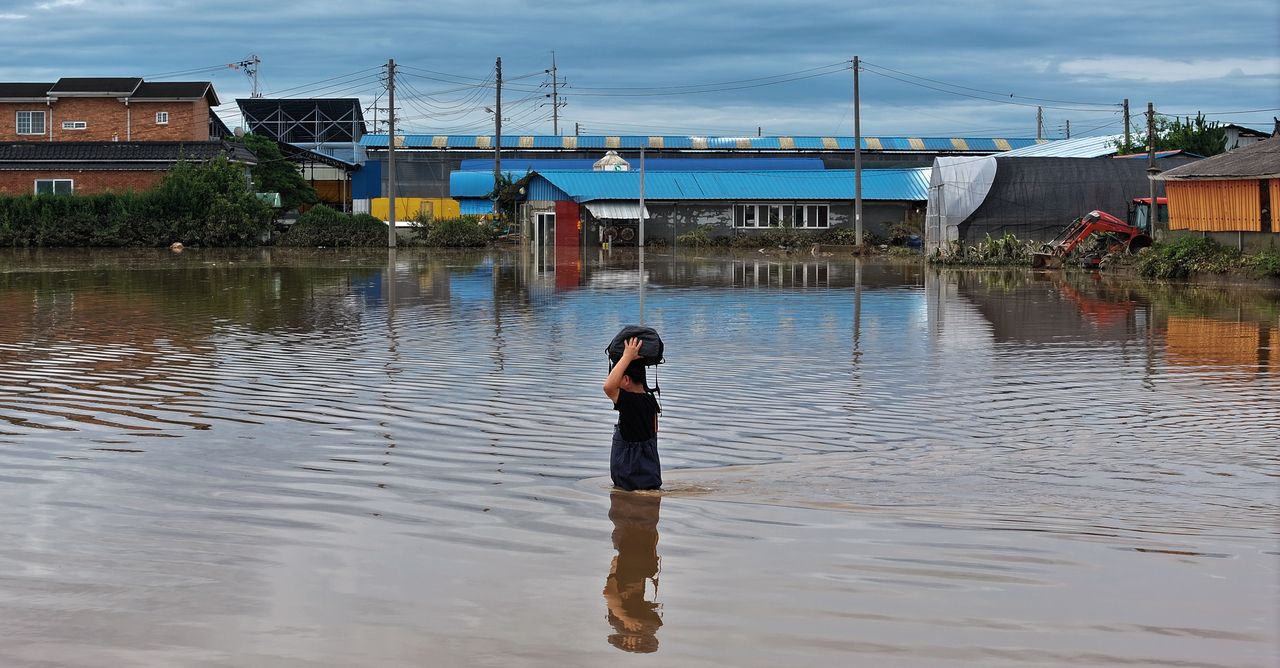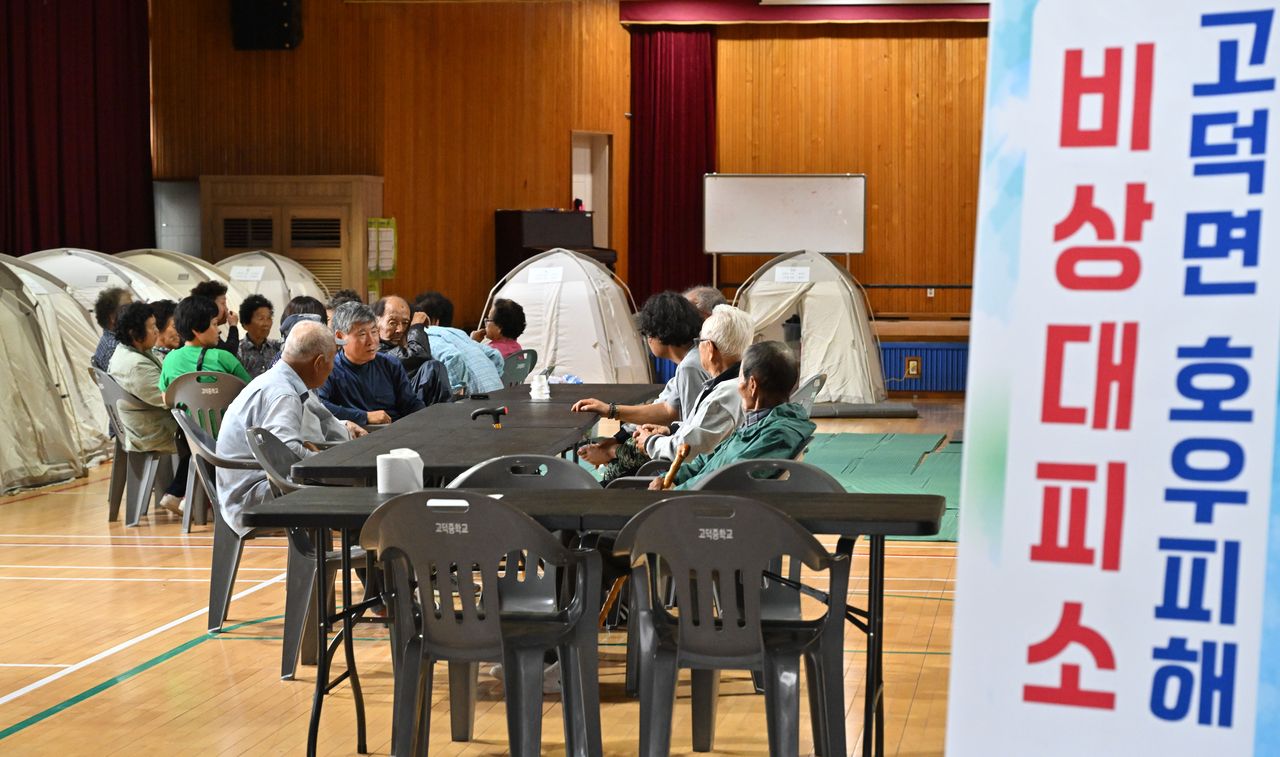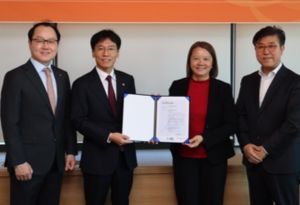 Heavy rains and flooding in southern South Korea have left four people dead and two missing, forcing over 5,000 residents to evacuate as of Friday morning. More downpours are expected through Saturday, raising concerns about additional risks to people, infrastructure, and livestock.
Heavy rains and flooding in southern South Korea have left four people dead and two missing, forcing over 5,000 residents to evacuate as of Friday morning. More downpours are expected through Saturday, raising concerns about additional risks to people, infrastructure, and livestock.
On Thursday, emergency responders discovered a man in his 60s in cardiac arrest inside a flooded vehicle on a road in Seosan, South Chungcheong Province. Despite being rushed to a nearby hospital, he was pronounced dead, officials reported.
In another incident, an elderly man in his 80s was found dead Thursday in the basement of his home in Dangjin, South Chungcheong Province. A driver in his 40s also lost his life on a road in Osan, Gyeonggi Province, when a 10-meter-high retaining wall, weakened by the rain, collapsed onto his vehicle. Additionally, a man in his 50s was found dead in his flooded home in Dangjin.
Public infrastructure suffered 499 reported cases of damage, with road flooding accounting for the majority at 328 cases. Private property damage totaled 425 cases, of which 203 involved flooded buildings. The Ministry of Agriculture, Food and Rural Affairs reported that flooding affected farmland totaling up to 13,033 hectares—equivalent to about 18,000 soccer fields—as of Friday. Rice paddies were particularly hard hit, with 11,041 hectares inundated. The flooding also caused significant livestock losses, with 56 cattle, 200 pigs, and 600,000 chickens confirmed dead.
The Ministry of Agriculture, Food and Rural Affairs reported that flooding affected farmland totaling up to 13,033 hectares—equivalent to about 18,000 soccer fields—as of Friday. Rice paddies were particularly hard hit, with 11,041 hectares inundated. The flooding also caused significant livestock losses, with 56 cattle, 200 pigs, and 600,000 chickens confirmed dead.
Authorities reported 45 blackouts, with 36 restored by 11 a.m. Friday, while efforts continued to address the remaining nine outages.
In response to the extensive damage caused by the torrential rainfall, President Lee Jae Myung pledged aggressive and proactive measures “to a point that might seem excessive” to prevent further casualties and damage during a disaster response meeting at the Central Disaster and Safety Countermeasures Headquarters on Friday.
Lee directed the Ministry of Interior and Safety and other government agencies to mobilize all available resources and administrative capacities to address the crisis. He also urged the Korea Meteorological Administration (KMA) to “share weather alerts faster and more proactively” by region, ensuring that “local and central agencies have enough time” to take appropriate action. Lee called on local governments to maintain round-the-clock emergency operations and stressed the need for robust recovery plans to help affected residents quickly return to their normal lives.
Lee called on local governments to maintain round-the-clock emergency operations and stressed the need for robust recovery plans to help affected residents quickly return to their normal lives.
As of 8 a.m. Friday, the rain had mostly stopped nationwide, although some areas, including the Greater Seoul region and northern parts of South Chungcheong Province, were still experiencing about 10 mm of rain per hour.
However, the KMA warned that rainfall would likely intensify again Friday evening, with total accumulations of up to 300 mm expected in South Gyeongsang Province and South Jeolla Province.
Other regions, including North and South Chungcheong provinces, North Jeolla Province, and North Gyeongsang Province, may see total rainfall of up to 200 mm until Saturday, while southern Gyeonggi Province and central and southern Gangwon Province could receive up to 150 mm.![Residents and public officials conduct recovery work on Friday at a house in Daegu flooded by record-breaking heavy rainfall the previous day. (Yonhap)]](https://contents-cdn.viewus.co.kr/image/2025/07/CP-2023-0309/30733259_3.jpg) While rain is forecasted to persist in southern Korea, including Jeju Island, until late Saturday night, the KMA indicated that rain will continue until Sunday morning in the Greater Seoul region and the inland and mountainous areas of Gangwon Province.
While rain is forecasted to persist in southern Korea, including Jeju Island, until late Saturday night, the KMA indicated that rain will continue until Sunday morning in the Greater Seoul region and the inland and mountainous areas of Gangwon Province.
On Saturday, temperatures are anticipated to rise gradually after the rain stops, bringing hot and humid air into the Korean Peninsula. Starting Sunday, heat wave advisories may be issued for most parts of the country, according to the KMA.










Most Commented